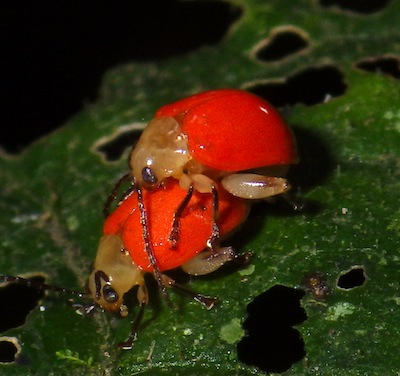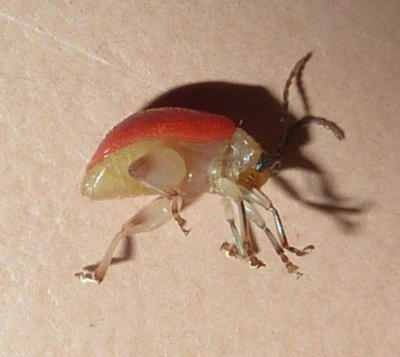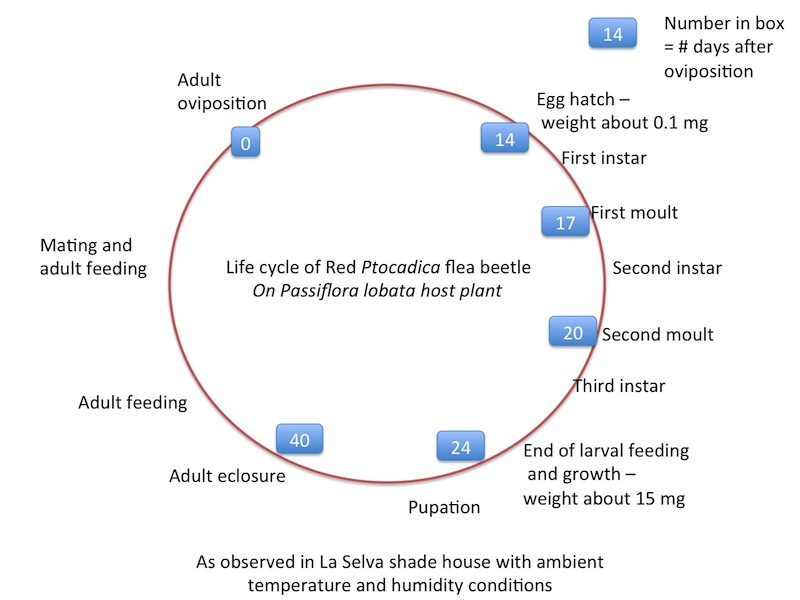Red Ptocadica Flea Beetle (Ptocadica "red")
("RWh"; "RWh Strabala")
This species is commonly found on P. lobata(over 90% of sightings), often in the company of the Blue Flea Beetle Monomacra violacea. Less social than M. violacea, it often sits singly on its own branch under leaves.This species colonizes a high proportion of P. lobata vines, which in turn are quite short-lived as compared with other Passiflora. This suggests that Red Ptocadica may be unusually adept at dispersing and finding new host plants. On several occasions I have seen that a few Red Ptocadica, with larvae, can skeletonize and defoliate their host plant. On another occasion I saw plants infested with Red Ptocadica survive more than two years. Once I found a Red Ptocadica feeding on the petiolar nectar gland of a Passiflora ambigua leaf. It was gone when I returned the next day.
Young larvae feed on the new leaves of P. lobata and are yellowish brown in color. They seem unaffected by the host plant's hooked trichomes, which kill the non-adapted larvae of Red Pedilia. They often moult from the second to the third instar underneath a horizontal stem. Moulting takes a full day or sometimes nearly two days before the larvae resume feeding. Larvae pupate in the soil under the plant. The life cycle (see photos & diagram below) from oviposition to pupal eclosure is at least 40 days, maybe as many as 50 days. This is a much slower development time as compared with a non-monophagous Heliconius butterfly. Adults live about a month in the isolation cages. Like the adults, larvae are usually found alone on the host plant.
Live specimen elytra are a rich reddish orange that almost glows, perhaps because a thin translucent layer covers the pigmented surface. The live surface is soft and delicate, and is easily bruised or discolored. After death this soft layer turns brown and, after a few months, dried Red Ptocadica specimens become visually indistinguishable from those of Yellow Ptocadica. In museum collections these two species have the appearance of Ptocadica straminea.



